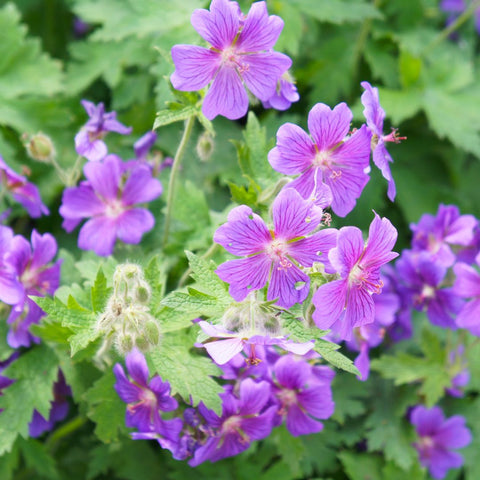Protecting plants isn't rocket science. Although you can never completely eradicate the threat of frost damage to the plants in your garden, you can at least use these helpful tips as a guide to prepare for the worst:
1. Garden Layout
Properly plan the layout of your garden to take advantage of microclimates. Plant frost-sensitive species in areas less prone to frost, such as closer to buildings or on higher ground facing north, west or south. Cold air tends to settle in low-lying areas, so avoid planting in frost pockets where cold air can accumulate.
Additionally, consider planting frost-tender plants in containers that can be moved indoors during extremely cold nights. Plants in containers may also be grouped together so that you can easily create a microclimate for your plants where they provide shelter for each other. It also makes it easier for you to cover and water them in one go.
2. Cover Plants Up

Simply putting a physical barrier between your plants and the weather works wonders.
Garden Fleece will protect them from frost and is breathable so will allow light and moisture to filter through. Don't be tempted to cover them in plastics like bubble wrap as this will trap moisture and cause them to rot.
If you want to make it even easier, you can use Fleece jackets like the one pictured that Alan Titchmarsh fitted in his recent Love Your Weekend Show. These are so easy to use; they just pull over the top of the plant and fasten with a draw string at the bottom.
Covering plants traps heat radiating from the soil and creates a microclimate that can be several degrees warmer than the surrounding air. Be sure to remove the covers during the day to allow sunlight in and prevent overheating.
Note: Pots (especially terracotta ones) can suffer from frost damage so make sure you cover these in the same way. This is where you can use your bubble wrap aroudn the pot to prevent weather damags.
Cloches - like the Kitchen Garden Cloche and Victorian Bell Cloches - are another way to protect your plants and can be easily removed to weed and water. They can also be used to warm the soil prior to planting so are real value for money.
3. Move tender plants to the greenhouse or indoors
If you have the space then you can move your plants into the greenhouse, plant house or even the shed. If they can't be moved then you can also overwinter them by covering them where they are. A Cold frame, or a Grower Frame can be put in place wherever the plants are..
4. Use a natural mulch
Apply a layer of organic mulch around the base of plants helps insulate the soil, and prevent rapid temperature fluctuations and protect plant roots from frost. Mulch also helps to retain soil moisture, which is crucial during frosty conditions. Especially important for evergreens in pots and with roots above the surface of the soil.
Common mulch materials include straw, leaves, bark, or pine needles.It sounds crazy, but in fact snow can help to insulate your plants, especially from cold drying winds. Make sure you still clear snow from tree branches and conservatory/greenhouse roofs, though, as snow can become heavy and cause damage.
5. Choosing Frost-Resistant Plants:

The earlier tips will help you with existing plants but if you are going plant shopping select plants that are naturally more resistant to frost to minimize damage. Local nurseries or gardening experts can provide information on plants that are well-suited for your specific climate. Frost-resistant plants are more likely to withstand colder temperatures without sustaining significant harm.
These measures will help preserve your plants but remember frost is not always a bad thing. Without it some plants, like garlic,would not grow properly and it provides a useful setback to garden pests like slugs, many of which won't survive harsh weather.

